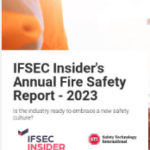Roy Tozer, a partner at law firm DLA Piper who worked on the Buncefield case for a number of years, gave a packed SHP Legal Arena an alternative view of the Buncefield investigation, arguing that there is a considerable amount of information about the case that ought to be in the public domain that isn’t at present.
The Competent Authorities (CA) in the Buncefield case were the HSE and the Environment Agency (EA), working together as one organisation. “There is a need for openness in assessing responsibilities and working in partnership with the CA,” explained Roy.
Tozer represented Total UK throughout the investigation, having been instructed shortly after it happened in December 2005, although he stressed he was not speaking on his client’s behalf. The site was operated by a joint venture between Total and Chevron, known as Hertfordshire Oil Storage Ltd (HOSL), and governed by the Control of Major Accident Hazards Regulations 1999 (COMAH). At 06.01, on the 11 December, a massive explosion occurred at the site, causing a huge fire, in which 22 oil tanks were set alight, and more than 40 people were injured.
Along with other relevant companies, Total was fined £3 million for breaches of s2 and s3 of HSWA, while HOSL was fined £1million for breaches of COMAH.
Roy described the setting-up of a Major Incident Investigation Board (MIIB) illustrated the significance of the incident, and constituted an “incredibly rare” step taken to ensure that there could be an open and frank ongoing independent investigation. One of its objectives was to examine the HSE and EA’s role in regulating activities at Buncefield under COMAH. On 11 December 2008, the final report of the MIIB was published, and given to the HSE, but not made public.
“In my view, it is arguable that this report would be extremely useful and important in promoting safety,” he said. “It is clearly in the public interest and should be disclosed to ensure safety of major-accident hazard sites.”
Roy explained that there are specific regulations imposed on a CA to communicate the conclusions of a safety report to the operator or prohibit the operation of an establishment or installation if prevention measures taken by an operator are seriously deficient. A CA is also required to inspect systems and procedures to ensure they are being adhered to and ensure an effective system.
“In my view, the policy and procedures report ought to allow us to consider how the CA performed – it must be in the public interest to see what they did, how they did it and how the investigation board has reported,” he said.
The 77-page policy and procedures report makes 38 recommendations, some of which were read out in the criminal proceedings, but many of which were not. The document was not included in the final Buncefield report, published on 28 February this year – Buncefield, how did it happen?
“There is no mention, whatsoever, of the steps taken to investigate by the MIIB,” Roy said, adding that he had asked if there was any objection to him publicising the report and was told it was an internal document provided for defence teams in the Buncefield case and that its use is restricted by the Criminal Procedures and Investigations Act. “Can there ever be objectivity and fairness in the regulation of COMAH sites in these circumstances?” he asked rhetorically.
Roy warned process-safety operators: “You cannot rely on the CA to satisfy your duties of care for you – the duties are yours. You must engage with the CA, because they are experts in their area, but you cannot rely on them to ensure the safety of your business and operations.”
He added that there needs to be a better understanding of process safety by operators of high-risk sites, including external validation. “There needs to be openness, the growth of trust, a partnership between operators and the HSE, but, more importantly, for operators of sites that pose risks, a true understanding that it is your duty and your responsibility to ensure the safety of the sites – you simply can’t rely on others.”
He concluded: “I am not in any way seeking to excuse what Total did. It did not contest the criminal proceedings. I am trying to illustrate for the benefit of everyone that there is a need for engagement, a need for openness, and a need for transparency.”
Fire Safety in 2023 eBook
SHP's sister site, IFSEC Insider has released its annual Fire Safety Report for 2023, keeping you up to date with the biggest news and prosecution stories from around the industry.
Chapters include important updates such as the Fire Safety (England) Regulations 2022 and an overview of the new British Standard for the digital management of fire safety information.
Plus, explore the growing risks of lithium-ion battery fires and hear from experts in disability evacuation and social housing.


Any progress on getting this final part of the report into the public domain?
The report has now been published.
http://www.buncefieldinvestigation.gov.uk/miib/policies.htm